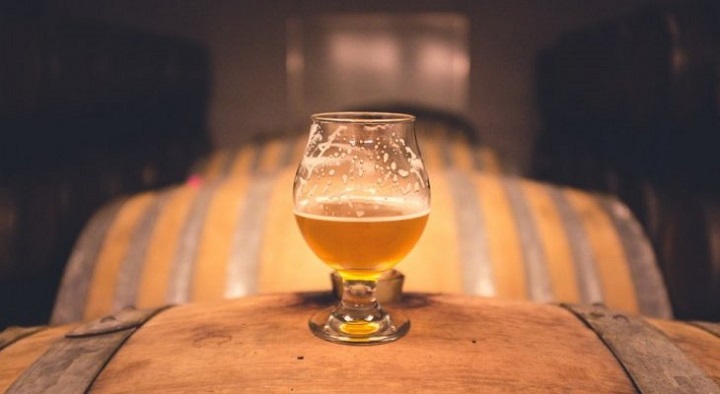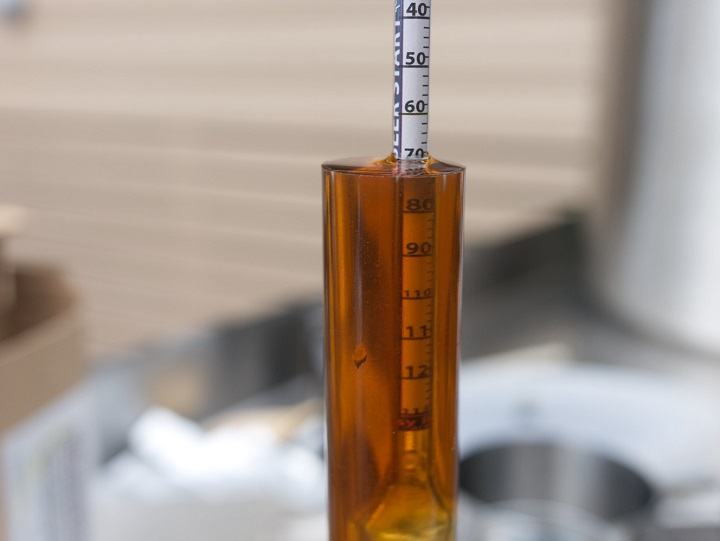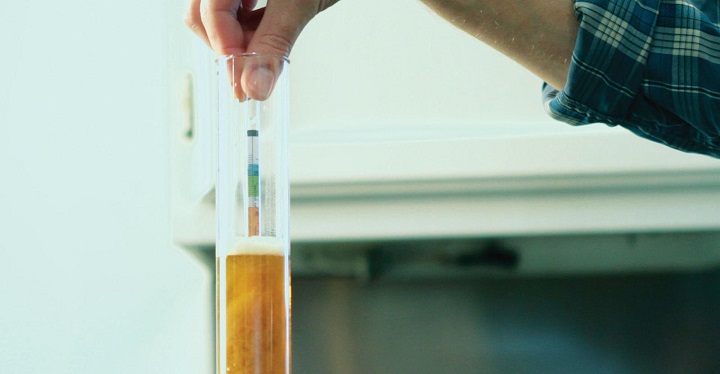Homebrewing: A Guide to Hydrometers
A lot of people are starting to see the beauty and excitement in homebrewing. A creative and productive hobby at the same time, it’s one of the best pastimes for people who are passionate about the intricacies of beverages and would like to dive even deeper into what makes their favourite liquids what they are.
You probably already know that homebrewing isn’t something you can just get up and do. The chemistry involved in it calls for a lot of different equipment pieces, some of which you might not be sure what to do with once you first see them. Then, there are those you do know what to do with but aren’t sure how to use them properly. Finally, we have the ones that are simple enough and represent the silver lining, maintaining the hope that you can actually brew your own beer, wine, spirits, and so on by yourself.

Source: homebrewadvice.com
It is very much possible to do homebrewing successfully, all it takes is dedication and a lot of learning, things I’m sure you’re keen on doing since you’ve shown interest in the hobby.
Today I’d like to talk to you about one piece of equipment that is often misunderstood. Simple-looking yet so important, a hydrometer is something that really matters when brewing. Let’s get into everything you need to know about brewing hydrometers and how to use them!
What Is a Hydrometer?
As we said, you’ll need a bit of equipment to be able to begin your homebrewing journey. A hydrometer should always be a part of it. It’s best to buy your hydrometer from a specialised store instead of big chain stores, as this way you’ll get to choose from the most accurate ones out there, not browse through a subpar selection, trying to guess the best among it.
Accuracy is something you really need in in this piece of gear, as it is, when stripped to its basics, a sort of scale, and we all know that a scale that isn’t accurate is just pointless.
To get a bit technical about it, a hydrometer is a device resembling a thermometer, which measures the weight of a liquid in relation to the weight of water. Basically, it measures the density of a liquid. “Device” is probably a bit of a harsh word to describe it. Something simpler would be that it’s just a glass tube with a ball inside that floats differently in relation to the composition of the liquid it’s put in. In brewing, this device is used to accurately calculate the alcohol by volume percentage based on the amount of sugar dissolved in it.

Source: worcestershirehomebrewclub.co.uk
How to Use One?
To get an accurate reading you’ll need to do two measurements, one before and one after you’ve started your initial brewing process.
A hydrometer is used when you’ve added all the needed ingredients to make your wash, but haven’t added any yeast yet. Yeast is an essential part of brewing as well, no matter what kind of alcohol you’re trying to end up with.
It’s best to have a testing tube alongside your device so that you can avoid placing it in the big container and risking it sinking in or having trouble managing it.
Get your tube ready, take some of the liquid you have and put it in. Then, take your hydrometer and place it inside. Don’t let it touch the sides and make sure there’s enough liquid in the hydrometer tube so that it doesn’t touch the bottom and is able to float freely. Centre it and write down the number it’s showing.
When your brew has fermented, it’s time to take the second and final reading. Repeat the above process once again and note the number your hydrometer is floating on. Once you have this, it’s time for the math!
It’s okay if you’re not math-savvy. All you’ll need to do to calculate your alcohol by volume percentage is subtract the final reading from the original one and multiply that number by 131.25. The result you get is your alcohol percentage by volume.
Before using it to measure your liquids make sure to test it out in some water first. If the reading is around 1.000, then you can be comfortable in knowing that your hydro meter is accurate. If there is a discrepancy though, you’ll need to keep that in mind when measuring your brew which brings us back to the fact that you should always buy hydrometers from stores specializing in brewing!
Another thing you’ll need to keep in mind when measuring is the temperature. These devices are the most accurate at 15C, but if your room is hotter or colder than that there are ways (yep, more maths!) to take that into consideration and get the accurate reading you need. You can find this information online.

Source: pinterest.com
The Bottom Line
I hope this article has helped you understand what a hydrometer is, why it’s important, and how to properly use one.
I’d like to stress once again the importance of buying trusted products only and not compromising. Hydrometers aren’t expensive, to begin with, especially when compared to other equipment you’ll need to start brewing, so investing in one should definitely be something to consider.
Nowadays you can find such devices with different scales on them showcasing different measurements which can come in handy. Before you start you’ll need to familiarize yourself with the optimal measurements for the drink you’re trying to make so that you know you’re treading the right path.
I wish you all the delicious drinks and much fun making them!






